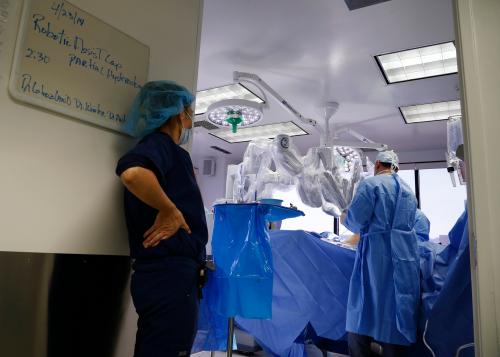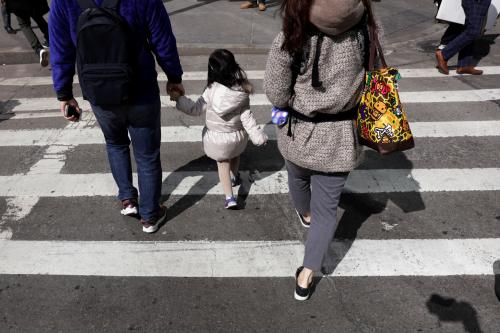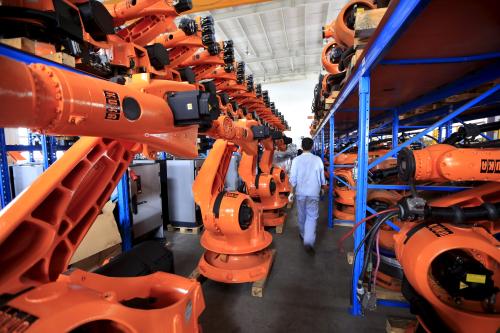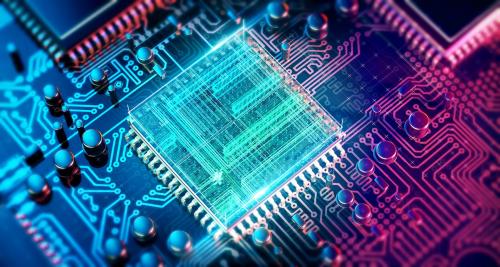Much of the current discussion on automation is of the “robots-killing-jobs” variety. This alarmism is unsurprising. After all, most research to this point has focused on the introduction of robots into manufacturing, or on computer algorithms that automate routine tasks. These are changes that have replaced, and will continue to replace, jobs that many workers, families and communities have historically depended on. But if history is any guide, the technologies adopted in the workplace of the future may be quite different than those that were initially dominant. As Daron Acemoglu and Pascual Restrepo (2019) suggest, the future of work and the workforce will depend on the balance between labor replacing technologies – those that supplant human brawn or rote repetition – and, in their language, labor reinstating technologies, that generate new tasks at which humans have a comparative advantage.
Labor Replacing vs. Labor Reinstating Technologies
The canonical example of a labor replacing technology is robots in car factories. Assembly lines, once consisting of a series of stations where five or six workers were responsible for installing or attaching a specific car part to a frame before it went to the next station, often now feature a series of robotic appendages in place of humans. Today, this technology has largely supplanted direct human effort in constructing a car. History is replete with examples of these labor displacing technologies. New technologies, such as the computer this piece was written on, have largely eliminated several occupations that were once common in the 20th century such as the typing pool. If advances in artificial intelligence (AI) and automation are heavily weighted towards these types of technologies, as some predict, the potential for substantial displacement of workers and further erosion of the labor share is quite high. But this is far from inevitable. The development of technologies that facilitate new tasks, for which humans are better suited, could potentially lead to a much better future for workers. While the widespread introduction of computers into offices certainly displaced millions of secretaries and typists, the new tasks in associated industries meant new occupations, including computer technicians, software developers, and IT consultants.
Moreover, broader structural changes in the economy such as the expansion of the service sector make it much less likely that technological change in artificial intelligence and robotics will result in a catastrophic job loss in the relatively near future.
Policies to promote pro-human technology
Given the implications of different types of technology for the future of work, it is important for public policy to encourage the development of the forms of technology that are most likely to lead to more jobs and higher wages. Some potential policies that support labor in the face of technological change include:
- Tax: Revising the tax code to reduce subsidies directed towards capital relative to labor. This would minimize incentives to inefficiently substitute capital for labor (Acemoglu and Restrepo 2019; AEI 2008; Tuzel and Zhang 2017).
- Training: Investing in dynamic training opportunities that prepare workers to perform new tasks created by automation and that complement new technologies such as artificial intelligence (Autor 2015; Acemoglu and Restrepo 2019).
- Insurance: Facilitating smoother workforce transitions by investing more resources in wage and unemployment insurance, supporting those who lose their jobs or move to a job with lower earnings (Holzer 2018).
- Wages: Directing subsidies towards technologies that develop new tasks that allow people to both earn a living wage and retain some level of meaning and dignity (Shiller 2019).
Time for some more technological optimism?
The long-run implication of technological advances for the labor market is, at this point, unknown. The doom and gloom that often accompanies commentary about the future of work is probably more than a little premature. Technology displaces jobs. But it also creates new jobs, and often in unpredictable ways. Several distinguished economists gathered at a conference hosted by Stanford University on the future of work recently concluded: “humans are underrated.” The feared negative impact of AI and robots on the workplace is likely greatly overstated. Many of the most potentially transformative technologies will still require a human touch.








Commentary
Robots kill jobs. But they create jobs, too.
March 18, 2019